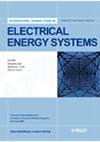Design methods investigation for residential microgrid infrastructure
引用次数: 30
Abstract
In this study a residential community in Phoenix was selected as the basis to develop design methods for a residential microgrid. A microgrid model was built using computer based software. Photovoltaic (PV) modules, microturbines, and fuel cells were chosen as the distributed energy resources (DERs) for the model. The optimal residential microgrid system configuration was sorted out according to the least net present cost (NPC), and the least cost of energy (COE) of the designed microgrid system. The results indicate that the COE of the designed microgrid in island mode is expensive, although it is more environmentally friendly compared to the grid. The purpose of combined cooling, heating, and power (CCHP) is achieved by utilizing the exhaust heat from microturbines to provide daily hot water consumption while cooling demand is achieved through the connection of adsorption chillers to microturbines. Sensitivity analysis shows that natural gas price escalation and price reduction of DERs significantly impact COE and NPC. Copyright © 2010 John Wiley & Sons, Ltd.住宅微电网基础设施设计方法探讨
在本研究中,选择菲尼克斯的一个住宅社区作为开发住宅微电网设计方法的基础。利用计算机软件建立了微电网模型。模型选择光伏(PV)组件、微型涡轮机和燃料电池作为分布式能源。根据所设计的微网系统的净当前成本最小(NPC)和能源成本最小(COE),对住宅微网系统配置进行了优化。结果表明,孤岛模式微电网的COE成本较高,但相对于电网而言更环保。利用微型涡轮机的余热提供日常热水消耗,同时通过吸附式冷水机组与微型涡轮机连接来满足冷却需求,从而达到冷热电联产的目的。敏感性分析表明,天然气价格上涨和天然气价格下调对COE和NPC有显著影响。版权所有©2010 John Wiley & Sons, Ltd
本文章由计算机程序翻译,如有差异,请以英文原文为准。
求助全文
约1分钟内获得全文
求助全文

 求助内容:
求助内容: 应助结果提醒方式:
应助结果提醒方式:


